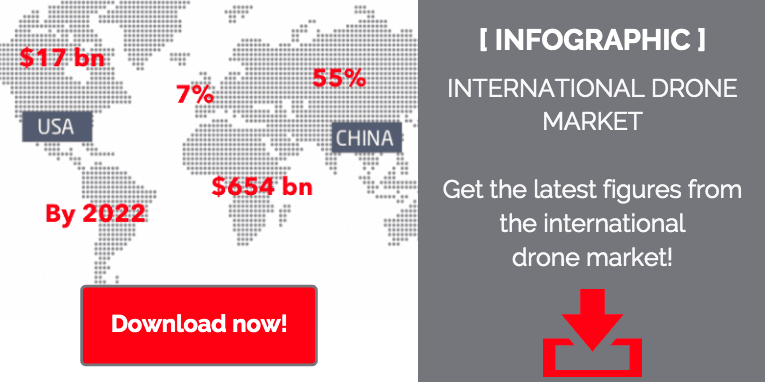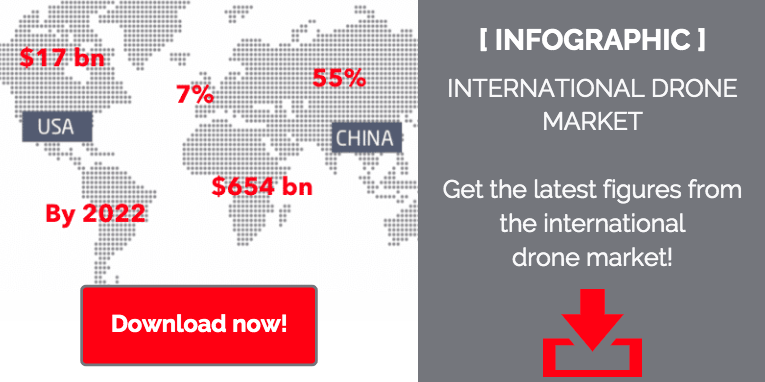Precision Thermal Imaging for Hunting & Leisure: Premium European Solutions for ...
The Hunting & Leisure market is evolving—driven by advanced technology, changing regulations, and the expectations of a new generation of responsible hunters...

September 04, 2019 . 5min read
Drones, originally developed for military and defense applications, have now expanded into a wide range of civil applications. Commercial-grade unmanned aircraft equipped with thermal imaging capabilities are now used in auditing, inspection, and surveillance by law enforcement and search and rescue professionals as well as by a growing number of industries from energy to farming.
Drones have carved out a top position, adding substantial value by delivering extremely detailed images while reducing professionals’ exposure to risk.
Read on to learn more about how drones are being used to enhance auditing, inspection, and surveillance.
Building thermal audits: More effective energy-efficiency audits
A drone equipped with an infrared camera is very good at locating heat losses and, therefore, identifying the faulty construction work or equipment that are often the cause of thermal defects.
Roof inspections are one area where commercial-grade civil drones are particularly effective, in terms of both technical performance and safety. The maximum allowable altitude for drones is 150 meters, high enough to fly over a wide range of buildings (public and privately-owned), inspecting roofs from a vantage point that cannot safely or easily be reached by people.
They can also capture very precise images, making thermal and energy-efficiency audits much more useful in terms of determining which improvements will be most effective at correcting thermal defects.
Construction, transportation, and oil & gas surveillance
Drones equipped with thermal imaging capabilities are ideal for the surveillance of sensitive facilities like electric and nuclear power plants, oil & gas facilities, warehouses, and ports, where they can detect dangerous leaks. These types of facilities can also be the targets of theft and vandalism. Here again, drones are excellent at detecting intruders.
Drones, which can conduct linear inspections, are also extremely well-suited for structural inspections of infrastructures like dams, suspension bridges, and power lines.

Solar power plant inspection
Drones equipped with thermal imaging sensors can identify a malfunctioning solar panel (a panel that is down does not generate any heat), saving owners and operators money.
Livestock and wildlife monitoring
Drones can also be used to detect sick animals in a herd, once again thanks to thermal imaging. Industrial cattle ranches, for instance, can fly drones over their livestock to determine whether any of the animals has a fever. These animals can then be isolated for treatment, limiting the potential spread of disease to the rest of the livestock.
Drones are useful for the monitoring of wildlife, as well. Wildlife conservation authorities sometimes need to locate animals in the wild and assess risk when wild animals get too close to inhabited areas or roam far away from their natural habitats.
Agriculture
Increasingly, the agriculture industry is turning to drones to conduct soil and field analysis and monitor grain and wine crops, for example. The analyses completed by drones can be used to increase crop yields by improving irrigation.
Search and rescue
Drones can fly over rough or hazardous terrain to locate people in distress. The use of drones makes search and rescue professionals’ work both faster and safer.
Traffic safety
Drones can be used to facilitate road surveillance, identifying hazardous driver behaviors and accidents and, in the process, allowing law enforcement and first responders to take action quickly.
Fire safety
Drones can give firefighters a bird’s-eye view of a fire and accurately locate areas where a fire is likely to restart. They also facilitate scene monitoring to pinpoint hotspots so that firefighters can respond before a fire gets out of control.
Drones have become an integral part of day-to-day operations in a number of industries. They are mobile, lightweight, and fast, making them the ideal solution in many situations. And, because drones are easy to use, they are extremely practical. Drones can be outfitted with advanced technologies like infrared imaging, a capability that has made them extremely useful in a number of highly-technical applications. Finally, drones make auditing, inspection, and surveillance faster, resulting in productivity increases.
To dig deeper, download our free infographic on the international drone market and get the latest market insights and data.
